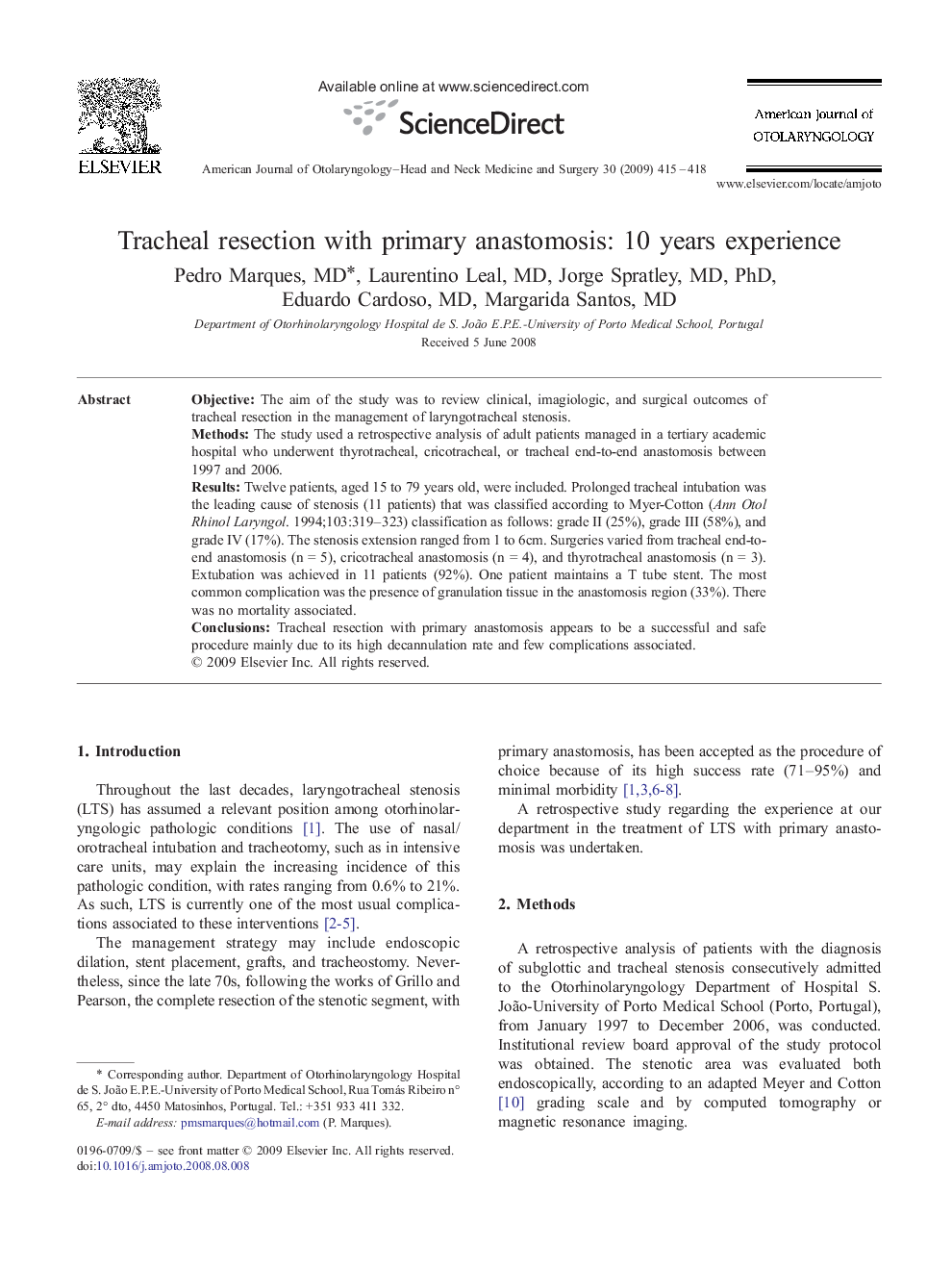| Article ID | Journal | Published Year | Pages | File Type |
|---|---|---|---|---|
| 4103845 | American Journal of Otolaryngology | 2009 | 4 Pages |
ObjectiveThe aim of the study was to review clinical, imagiologic, and surgical outcomes of tracheal resection in the management of laryngotracheal stenosis.MethodsThe study used a retrospective analysis of adult patients managed in a tertiary academic hospital who underwent thyrotracheal, cricotracheal, or tracheal end-to-end anastomosis between 1997 and 2006.ResultsTwelve patients, aged 15 to 79 years old, were included. Prolonged tracheal intubation was the leading cause of stenosis (11 patients) that was classified according to Myer-Cotton (Ann Otol Rhinol Laryngol. 1994;103:319–323) classification as follows: grade II (25%), grade III (58%), and grade IV (17%). The stenosis extension ranged from 1 to 6cm. Surgeries varied from tracheal end-to-end anastomosis (n = 5), cricotracheal anastomosis (n = 4), and thyrotracheal anastomosis (n = 3). Extubation was achieved in 11 patients (92%). One patient maintains a T tube stent. The most common complication was the presence of granulation tissue in the anastomosis region (33%). There was no mortality associated.ConclusionsTracheal resection with primary anastomosis appears to be a successful and safe procedure mainly due to its high decannulation rate and few complications associated.
